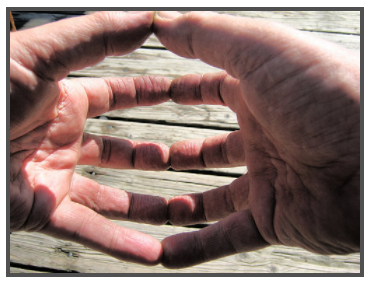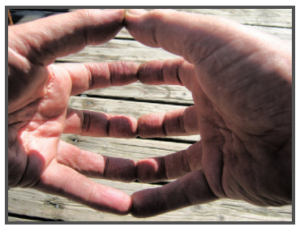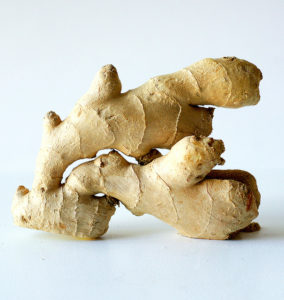
Listen to this post
 I remember how my Grandma Belle used to say, “The weatherman has nothin’ on my knuckles.” And it was true: She was rarely wrong predicting the weather.
I remember how my Grandma Belle used to say, “The weatherman has nothin’ on my knuckles.” And it was true: She was rarely wrong predicting the weather.
How can joint pain be a barometer? We know that pressure changes affect the synovial fluid that lubricates your joints. Yet they don’t affect everyone the same way. Some experience pain when pressure rises, others when it goes down.
But while you can’t do anything about the weather, you can do something about the joint pain and stiffness.
Keep Moving
Being sedentary is the least effective way to keep your joints juicy. Any activity is better than none, though your age, exercise history and overall health should dictate your choice of routine.
Whatever kind of exercise you choose, gentle movement every day upon arising can be a powerful tool to develop body awareness – an important skill for understanding what your body needs through the rest of the day.
I start the day with a simple yoga routine – several rounds of sun salutations, standing and inverted poses – and it’s been (if you’ll excuse the pun) eye-opening to notice how differently I feel day to day. The morning after a strenuous hike, my hamstrings may be screaming. The morning after a massage, I might feel like Gumby. Some days I feel (and sound) creaky; others, I feel like a dynamo.
Get Spicy
Food is medicine, and diet plays a big role in how our body serves us. Smart choices help us stay healthy and mobile. And when it comes to joint pain and inflammation, two spices can be especially helpful: the Ayurvedic superstars turmeric and ginger.
A classic remedy for arthritis, turmeric has been extensively researched in the West. Writing in the American Botanical Council’s HerbClip, respected ethnobotanist James A. Duke, PhD, reports that turmeric may outperform many pharmaceuticals without their adverse effects. He also notes that its active ingredient, curcumin, is a multifaceted anti-inflammatory agent that improves arthritic symptoms.
Turmeric also inhibits the formation of the brain plaques associated with Alzheimer’s. So perhaps it’s no surprise that dementia is rarely found in India: Turmeric is a common ingredient in the curries consumed at most meals.
If you aren’t eating Indian food regularly, an easy way to get a daily dose is to take up to 1 teaspoon of turmeric powder in a warm drink. Here’s a favorite bedtime elixir of mine:
Golden Turmeric Tea
- 2 tbs. turmeric
- 1/4 c. water
- 1 c. organic soy, almond or cow’s milk
- 1 tsp. almond oil or ghee
Stir together the turmeric and water in a small saucepan and bring to a simmer. Keep stirring until it forms a thick paste. Remove from heat and set aside the paste in a ceramic dish. (Turmeric will stain plastic.)
In a clean saucepan, mix the milk, oil or ghee with ½ to 1 teaspoon of turmeric paste. Bring just to boil and remove from heat. Whisk briskly – or, if you prefer a frothier drink, blend. (I use a handheld electric frother.) Sweeten with honey, maple syrup or stevia to taste.
While making the paste first makes the preparation take longer, it promotes assimilation of the spice and lessens the dregs. The excess paste will keep in the refrigerator for several days, so you’ll be ahead of the game next time you want a cup of this delicious tea.
 Turmeric’s close relative ginger is likewise believed to offer protection against brain disease because of its anti-inflammatory properties documented by science. These same properties, of course, tame muscular aches, cramping and creaky joints, and help reduce the pain and swelling of osteoarthritis and rheumatoid arthritis.
Turmeric’s close relative ginger is likewise believed to offer protection against brain disease because of its anti-inflammatory properties documented by science. These same properties, of course, tame muscular aches, cramping and creaky joints, and help reduce the pain and swelling of osteoarthritis and rheumatoid arthritis.
Ginger is, in fact, a virtual medicine chest, having been used for centuries in both Chinese and Ayurvedic medicine. It’s been shown to stimulate digestion, prevent nausea and support heart health, lung health and circulation.
There are many creative ways to enjoy ginger. One I especially like is to sauté peeled, diced ginger in a little bit of olive oil and use it like croutons in soup or on grains. Its crunchy, delicious taste enhances many recipes.
The root also makes a refreshing and stimulating tea, and I include the recipe for one of my favorites in my January newsletter. Like the turmeric elixir, it can help ease your joint pain and reduce inflammation so you can keep on enjoying all the things you love to do – wintertime or anytime!
Scroll up to subscribe to my free monthly newsletter via the sidebar form.
View the newsletter archive.
Images by Pictoscribe, h-bomb and artizone, via Flickr